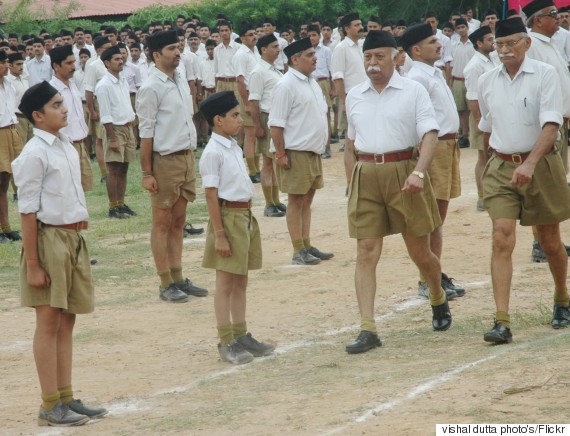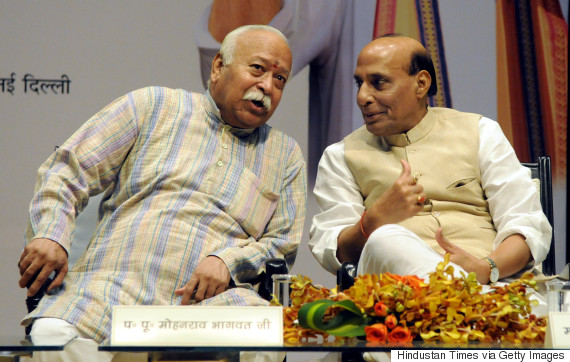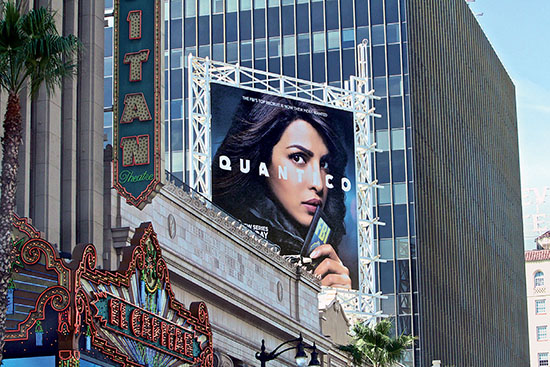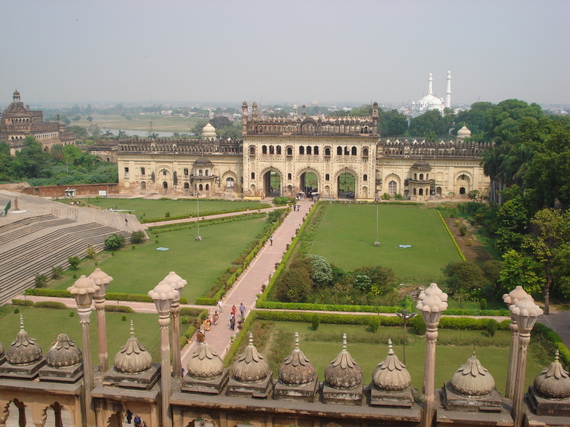Josh Radnor, most famously known for playing the affable 'Ted Mosby' in the cult TV sitcom,
How I Met Your Mother, truly came into his own as an artist in the last few years. He's made two films as a writer-director (
Happythankyoumoreplease won the Audience Award at the Sundance Film Festival and
Liberal Arts received much critical acclaim), he's starred in the Pulitzer Prize-winning Broadway play, Disgraced, he's written pieces for
The Huffington Post,
LA Times Magazine and
Indiewire, among others, that exude positivity, and has also given inspirational talks the world over. He was in Mumbai recently for one such talk, where he used his fame as an example to speak about why we need to be 'contagiously good' with kindness.
In an exclusive hour-long interview, he spoke about why he believes so strongly in kindness and hope, and discussed acting, writing, direction, and of course,
How I Met Your Mother (HIMYM).
You wrote a wonderful piece in The LA Times Magazine on the importance of being kind. It's interesting that you are using your fame to talk about not any big, worrisome issue or cause, but about something as elementary as kindness.
I think that there's a kindness deficit going on everywhere, in some way. I think we're hurting a little bit, and a simple word or a kind gesture from someone can really alter the course of someone's day or someone's life. Because of that, I feel that we underestimate the power of kindness, and how every word, thought and action is consequential. I think I also wrote in the piece that unkind words were kind of like air pollution.
It's almost like people writing mean stuff on the internet... they don't realise that it actually goes somewhere and affects people emotionally. Words have a kind of charge or a heft, that what comes out, goes around, and you can feel it.
So well, even if I worked in finance or the Silicon Valley, I'd still be talking about kindness. It may have something to do with growing up in the Mid-West, which is a nice place (chuckles), but I think, more than that, it's about how when I'm kind, I feel good, and when I'm not, I don't feel good. So, in some ways, being kind is like a beautifully self-serving thing, because I would rather feel good about myself and what I'm contributing to the world, rather than just being reckless and serving my ego all the time, which, I find exhausting, you know.
We've seen how you've carried these ideas into your writing and direction as well, but the roles that you're taking on as an actor after HIMYM are all complex in their own ways. Is there a line that you draw about the kind of roles you take, so you stay true to your philosophy artistically?
Yeah, certainly. But it's not about not choosing a, say, violent role, it's more about how I may not respect what it's saying to the world. I think we become the stories we tell ourselves about ourselves. I know this in my life that I want to be careful about who I say I am. So, I feel like, if we say we're greedy, horrible, angry creatures, we become that, and I'd rather not be that. I don't want to participate in things that make me feel bad about humanity, or that perpetuate certain lies about who we are. I'm certainly interested in playing complicated people but I turn down a lot of stuff that I feel like, is... (chuckles), assaultive of our better nature.
![josh radnor]()
Like I said in the other
Huffington Post piece that we spoke about before the interview, there are so many other people who are on the case of how horrible we are, and I just feel like, as a creator of things, I want to take people through the dark woods of the Joseph Campbell stuff, but I want people to come out of the other end, emerged and transformed, and awakened to some new aspect of themselves that they didn't know before they went on that journey.
In the same Huffington Post piece, you wrote about how there is snobbery about films with so-called 'lighter' ideas, like kindness, and how the darker stuff is always seen as more real and 'sophisticated'. Do you face that challenge whenever you try to make something similar?
Oh all the time, all the time. I mean, it's interesting because, both my films were applauded at Sundance, and embraced in the world, but there's a certain kind of critical snobbery that takes over. I always ask myself that question: why do we consider that which is dark 'sophisticated', and I think it has something to do with this suspicion that underneath everything, we're actually bad. I was talking to a friend the other day, and telling him how I think, it's the exact opposite; at our core, at our core-core, at the deeeepest base, I think we're divine. I think we're good. And I think there's all this other stuff that's on top of it that we need to get rid of, so we can get back to that core principle.
I just feel that it's a different way of conceiving of the world, and conceiving of the uses of art, and what, I sometimes think, are the misuses of art, which reinforce these ideas that we are these terrible, horrible, Darwinian creatures who just are wired to maximise self-interest. I just think that's a lie. I feel it's actually brave in such a cynical society to tell stories where people are risking the charge of being called 'sentimental', which I think is ridiculous, because in today's age, if the critic feels something, if they feeeel something, if they get provoked emotionally, they call it 'sentimental' (chuckles).
But I go to the movie so I can feel something, so I can transform myself, right? So I think that there needs to be a distinction between sentiment and sentimentality. Sentiment is great, it's a full feeling. Sentimentality is something manipulated, it's a lie. It's a false, cheap cliché. I feel like I don't make those kind of movies, because I'm trying to make something real and honest and have the characters experience something that makes the audience feel something. I try not to apologise for that, although maybe I just did apologise for that (laughs).
I try not to, though (chuckles).
In both your films, there's always some wisdom being passed on by someone older to someone younger, and sometimes, the other way around. How did this become a theme for you? You're also doing this in your own life now with your talks and columns.
Someone pointed out to me after
Liberal Arts that all my films have mentorship in them, and they were right. There's a whole web of mentorship in them, and I think it's because I had very good parents, I had very good teachers, but also because I like learning. I like learning from people. And people have said things to me at very tender moments that have altered the course of my life. And, because of that, I find it to be a very dramatic moment, when someone has just the right words that you need to hear and it's almost as if, you know, God has taken over their mouth and is speaking to you. You know, they are speaking to you what you need to hear. So I've really loved the teachers I've had. And I really love the opportunity when I can be a good friend or a mentor to someone, and that's certainly a theme of what I do. But there's also another theme.
![josh radnor]()
You know, it's interesting, I spoke at Cambridge the other night and I read this article someone wrote about it. She was a little glib and dismissive of one particular thing that I said. Someone had asked me if I had any advice for college students, and I essentially said what I had said in
Liberal Arts, which is that this is the only time you get to do this, and if you don't appreciate it now, you're going to be haunted by the fact that you didn't. The writer used a term like a 'tacky cliche' and I was kind of thrown by it, I thought, 'No! It's a cliché because it's true!'
If you aren't present in this moment, you're going to be nostalgic and you're going to realise that you weren't awake for one of the most special times of your life. I was telling my friend this the other day, that I'm not like a sunny optimist all the time, I actually battle some real melancholy, but I'm trying to (chuckles) stay on the side of working towards transforming rather than getting stuck in some rut... or (pauses), a feeling of hopelessness. I mean, that's maybe the worst feeling... hopelessness. So be grateful, you know. And that's what both the movies are about — pay attention to your life and be grateful.
That's also possibly one of the things that Ted Mosby taught the audiences. I loved Ted and found it amazing how he was probably the only sitcom character I've seen whose 'quirk' is empathy. He cared, felt and had compassion. And that seems to be something you've brought to the role.
I used to feel like he was closer to me when I started, because I was trying to find these points of identification with him, but as the show went on, I started growing in ways that the character was not. So I've used this before — I've just said that he was like my annoying younger brother (chuckles). Like we're definitely related (grins), and he sometimes drove me crazy, but at the end of the day, I loved him, because he was such a great guy.
You know, my acting teaching at NYU used to say that a character is a 50% meeting of you and 50% of the character. So there was 50% of the stuff that the writers were doing and 50% was stuff that I was bringing to it. And then, the writers start paying attention to who you are, and then they write that in, so it becomes like this weird, interesting dialogue between you and the writers, about this character. You know, for instance, Jason's character, Marshall, was envisioned, and you'll notice in the pilot, that he's afraid to open the champagne bottle. But then they got ahold of Jason Segel, who's not afraid of anything (chuckles). So they started making him a different character, because they suddenly had the actor. So similarly, I don't feel like Ted, but I lent Ted a lot of myself, if that makes sense.
Did any of the ideas perpetuated by Ted or the show shape who you are as a person?
Ted... not quite, no (chuckles). I mean, maybe I'm being dishonest with myself, but I think he was a better example of a friend than he was as a romantic kind of a guy. I mean, he gets so much credit for being this great romantic, but sometimes I think he was actually crazy, and a little obsessive, in a really unhealthy way. Like a lot of people cite this ninth season speech, where he talks about love, you know... 'Love means doing anything for a person, no matter if it kills you', and I think, like, 'No! It doesn't!' That sounds like insanity, calm down (grins). But I thought he was one of TV's great friends; he was a really loyal person.
As for the show, well, I think the biggest thing that it gave me was that it taught me to be publicly vulnerable. Because it's a very hard thing for a man to be that vulnerable in our society, and some people don't want to see that, and others are longing to see that. So, it taught me a certain kind of emotional bravery that I don't know I would have had had I not been forced to every week. And I remember that same acting teacher at NYU thought that I was an incredibly, technically proficient actor, but he thought that I didn't I wasn't connected to my emotional life. And I couldn't think of a better teacher for that particular thing that I needed to learn than
HIMYM.
I want to end by asking you a fan question, which you may have been asked already a hundred times. It's been over an year since HIMYM ended, do you look at the ending differently now? Do you feel it could have ended in some other way?
(Chuckles) Yeah, I mean, I wasn't the creator of the show, I didn't write the show, so I was serving the show as an actor, and I know, certain people act like I, (laughs), you know, had something to do with it or wrote that, and I obviously didn't. But I also stand by the vision of it and I think, ultimately, the show will age quite well. I think it'll be interesting how we feel about that in 10 years versus right now, and I think some of the sadness people felt was just sadness about the show ending. It's just hard to let go of something that you love like that. I also think if you look at it from a kind of meta perspective, it's like the whole pilot episode was not about the mother but about 'Aunt Robin'. So the DNA of the whole show was in that pilot episode. 'I thought we were talking about Mom?' 'No, we're talking about Aunt Robin!' That's what the whole show was.
![]() Like Us On Facebook
Like Us On Facebook |
![]() Follow Us On Twitter
Follow Us On Twitter |
![]() Contact HuffPost India
Contact HuffPost India
 Like Us On Facebook |
Like Us On Facebook |  Follow Us On Twitter |
Follow Us On Twitter | 















